Jirye Arts Village (지례예술촌)
11.6 Km 28456 2024-05-29
427 Jiryeyesulchon-gil, Andong-si, Gyeongsangbuk-do
+82-54-852-1913
Located in Andong, Jirye Arts Village first formed as a result of the construction of Imha Dam. When a small neighborhood in Jirye-ri, Imdong-myeon was at the risk of flood due to the dam, Kim Won-gil, the village leader at the time, relocated and rebuilt ten houses to the current location in 1986. This neighborhood, now known as Jirye Arts Village, was designated as an art village in 1990 and since then, many artists settled in the neighborhood and formed a community of culture and art. Today, Jirye Arts Village offers a variety of opportunities to experience Korean culture through hands-on arts and crafts as well as diverse cultural activities.
Mancho Gotaek [Korea Quality]만초고택[한국관광 품질인증]
11.7 Km 3 2023-10-30
48, Geumsojungang-gil, Andong-si, Gyeongsangbuk-do
+82-10-5191-3697, +82-10-3057-2223
The 150-year old Mancho Gotaek (Old House) in Imha-myeon, Andong, Gyeongsangbuk-do, was the home of Mancho Im Dong-han, a Joseon courtier at the court of King Gojong, and is an Andong cultural heritage asset. With a mountain behind and a stream flowing in front of it, this was a perfect spot for a house according to Korean pungsu (feng shui). Guestrooms comprise a sarangbang, small room, larger room, and loft room, all ondol-heated. Nearby must-visit places include the Geumso Ecological Park and Andongpo Village where Andong hemp is made.
Oryuheon House [Korea Quality] / 오류헌 [한국관광 품질인증/Korea Quality]
12.7 Km 5 2021-04-01
18-15, Gireumaje-gil, Andong-si, Gyeongsangbuk-do
Oryuheon House, located near Imhaho Lake in Andong, Gyeongsangbuk-do, offers a chance to stay in a historic house from the Joseon period. The house, also known as Mogwa House, was built by Kim Won-jung, the third son of Sukjong-era rector of the National Academy Kim Bang-geol, when he formed a family of his own in 1678. It was designated as the National Folk Cultural Heritage No. 184. The door’s wooden frame and the open floor space exemplify the beauty of the literati house of the Joseon period, while the sarangchae (men’s quarters) and daemunchae (gate quarters) showcase the sophisticated architecture of the era. Anchae (women’s quarters) retains its original appearance, while the sarangchae was rebuilt in 1920. The construction of the Imha Dam in 1990 resulted in the house’s relocation to its present location.
The owner of the house resides in anchae and sarangchae. Guests have access to a space that includes a 2-kan room, which can accommodate up to 4, an open floor space, and a bathroom. Cooking is prohibited in the house, but guests can make use of a grill located on a small yard reserved for the guests. Korean-style breakfast, including menus like chicken porridge or lotus leaf rice, are offered free of charge in the morning. Nearby sights include the water sports activities in Imhaho Lake, Manhyujeong Pavilion, Hahoe Village, and Dosanseowon Confucian Academy.
Chohae Gotaek [Korea Quality]초해고택[한국관광 품질인증]
13.2 Km 2 2023-10-24
17-12, Manchwidang-gil, Uiseong-gun, Gyeongsangbuk-do
+82-10-2910-2092
Chohae Gotaek (Old House) in Uiseong, Gyeongsangbuk-do, is a hanok stay which has stood for 100 years in Sachon Village - a traditional Confucian village. The house was built and lived in by the Pungsan Ryu clan, one of the most important Andong families going back to the 1500s. Built of Korean pine, the house has a classic hanok style, with some really beautiful touches: the elegant lines and the patterns in the windows and floor have all been admired by traditional architecture experts.
Cheongsong Apple Festival (청송사과축제)
13.2 Km 25681 2023-09-18
Wolmak-ri, Cheongsong-gun, Gyeongsangbuk-do
+82-54-873-3686
Cheongsong Apple Festival is held in the fall every year to promote the excellent quality of apples grown in the area. Cheongsong has the perfect conditions for superior taste and quality of apples, being located in a clean environment with a low amount of rainfall and plenty of sunlight. The festival offers various unique events and activities to entertain visitors.
Juwangsan Spa Tourist Hotel (주왕산온천관광호텔)
13.9 Km 16385 2021-08-10
315, Jungang-ro, Cheongsong-gun, Gyeongsangbuk-do
+82-54-874-7000
Juwangsan Spa Tourist Hotel is located approximately 15 minutes from Juwangsan National Park. The hotel has clean rooms, a Korean restaurant, banquet hall, and spa facilities. Guests may take advantage of the health programs offered at the spa or enjoy the hot springs sauna that uses alkaline water, which has been proven to heal chronic headaches and shoulder pain.
Juwangsan Mountain Seongcheondaek
14.1 Km 10745 2021-04-09
12, Seodang-gil Cheongsong-eup, Cheongsong-gun, Gyeongsangbuk-do
+82-10-6711-6427
Seongcheondaek House with about 300 years' history is an old hanok guesthouse located in Cheongun-ri at the entrance to Juwangsan Mountain, which can be reached by driving along Yongjeoncheon Stream from Cheongsong County in Gyeongsangbuk-do. With the tranquil surrounding atmosphere among houses in the alley, the house features a typical square-shaped structure of the mountain region.
Seongcheondaek House is presumed to have been bought by Im Chun-seop, a high-ranking official during the reign of King Gojong (r. 1863-1907) of the Joseon Dynasty, but its exact construction date is unknown. It was designated as National Folklore Cultural Heritage No. 172 in 1984.
This cozy hanok house consists of the main gate with straw-thatched roof, square-shaped Anchae (Women’s Quarters), middle gate, Sarangbang (master’s room), tea room, old stable, Daecheongmaru (hall between rooms) overlooking the courtyard with beautiful scenery, and so on. In particular, guests can enjoy a romantic atmosphere from Daecheongmaru by appreciating the scene of falling raindrops or melting snow from the edges of the eaves.
The Munganchae (gate building) consisting of a bathroom and a kitchen has a straw-thatched roof and a renovated interior for the guests’ convenience. The square-shaped Anchae is composed of two guestrooms (Sarangbang and Anbang) and a reading room (Utbang). The rooms feature a traditional construction style with cozy and clean interior items including a small wooden table as well as clean beddings. In addition, a kitchen is situated in front of Anbang, displaying traditional kitchen appliances including a fireplace and two large iron pots, unlike a modern-style kitchen in Munganchae. Daecheongmaru of Anchae offers an open view of the outdoor landscape through two large wooden windows. In addition, a deep groove in the middle of the yard in front of Daecheongmaru catches one’s eyes. The groove is said to have been made due to the rubbing of the foot on the ground when weaving hemp cloth hundreds of years ago.
Guests can enjoy relaxation both during daytime and nighttime under a starry sky in the yard where a small wooden bedstead and a stone table are situated. Moreover, the house provides folk games such as neolttwigi (Korean see-sawing game) and tuho (pitch-pot) as well as the family art therapy program wherein family members can understand each other better through a painting and drawing activity. Surrounding tourist attractions include Juwangsan National Park and Jusanji Reservoir.
Uiseong Gounsa Temple (고운사 (의성))
15.2 Km 8840 2019-11-26
415, Gounsa-gil, Uiseong-gun, Gyeongsangbuk-do
+82-54-833-2324
Gounsa Temple lies on Deungunsan Mountain in Uiseong, Gyeongsangbuk-do, and was built by Monk Uisang in 681 during the reign of King Sinmun of the Silla Kingdom. Although the pronunciation of the name was never changed, its meaning slightly changed from “High Cloud Temple” to “Solitary Cloud Temple” after Choi Chi-won, a renowned scholar in the late Silla Period, helped to build two pavilions (Gaunru and Uhwaru) and renamed it. It is Branch Temple No.16 of the Korean Buddhist order, Jogyejong, and manages temples in Uiseong, Andong, Yeongju, Bonghwa, and Yeongyang.
Befitting its meaning, the temple is surrounded by outstanding scenery on Deungunsan Mountain, meaning “Riding on the Clouds.” Quite isolated from villages, the temple is a very quiet, serene place.
Gounsa Temple is home to one of the most cherished pieces of architecture, Gaunru Pavilion (“Floating over the Clouds”). This elegant pavilion is propped up by wooden columns, which are, in turn, supported by foundation stones. It looks as if the pavilion placed its feet in the water while standing.
Among the many buildings comprising the temple complex, Yeonsujeon Hall is a unique building that was built to store Eocheop (the genealogical record of royal families) in 1774 (20th year of King Yeongjo). As a royal building, it shows the Confucian architectural style, different from other Buddhist buildings within the temple.
Cheongsong Folk Museum (청송민속박물관)
15.6 Km 9111 2022-08-05
222, Juwangsan-ro, Cheongsong-gun, Gyeongsangbuk-do
+82-54-874-9321
Cheongsong Folk Museum was opened in 1999 to promote the history, culture, and customs of the region. The three-story museum offers indoor & outdoor exhibition halls.
The indoor exhibition halls showcase educational materials related to farming and the customs of Cheongsong. Exhibitions - such as the Traditional Guest Room, Weaving Room, Items of Everyday Use, and Cheongsong Porcelain - offer glimpses of how people lived in the past. The outdoor exhibition space reproduces a traditional tavern, waterwheel, millstone operated by a horse or ox, monument to ward off misfortunes and protect prosperity, and natural stones used for worship, with which visitors can experience farm life in the past.
Dalgi Mineral Spring [National Geopark] (달기약수탕 (청송 국가지질공원))
15.8 Km 17190 2021-06-24
16, Yaksu-gil, Cheongsong-gun, Gyeongsangbuk-do
+82-54-870-6111
Dalgi Mineral Spring was found approximately 130 years ago during construction of a waterway. The carbonated water has various minerals that help treat multiple diseases. The water is formed when rain water gets absorbed underground and meets carbon dioxide from the magma deep below.
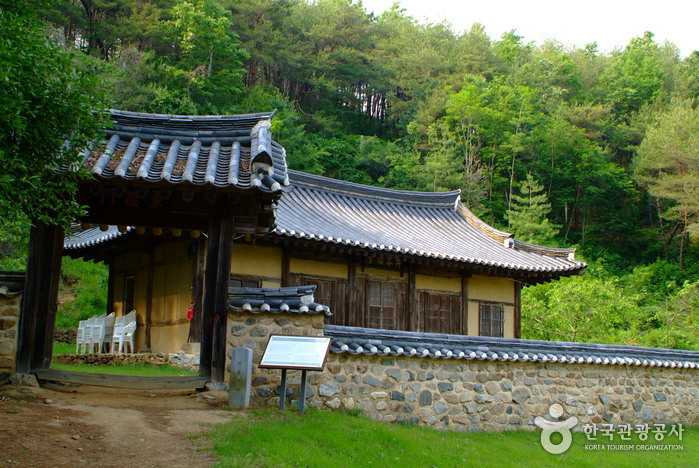
![Mancho Gotaek [Korea Quality]만초고택[한국관광 품질인증]](http://tong.visitkorea.or.kr/cms/resource/05/3022005_image2_1.jpg)
![Oryuheon House [Korea Quality] / 오류헌 [한국관광 품질인증/Korea Quality]](http://tong.visitkorea.or.kr/cms/resource/29/2706129_image2_1.jpg)
![Chohae Gotaek [Korea Quality]초해고택[한국관광 품질인증]](http://tong.visitkorea.or.kr/cms/resource/59/3021359_image2_1.jpg)
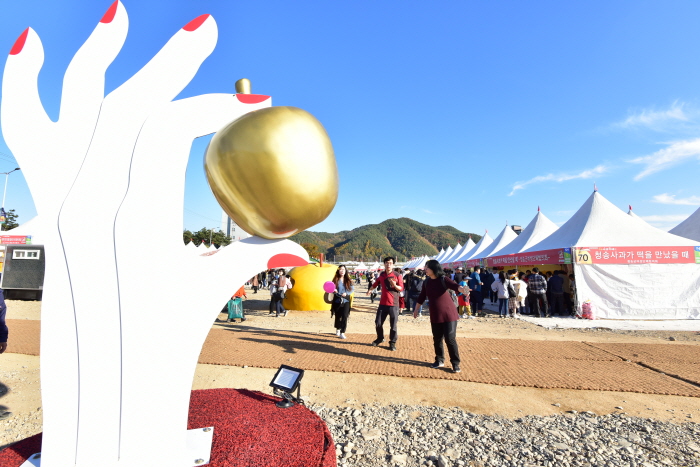

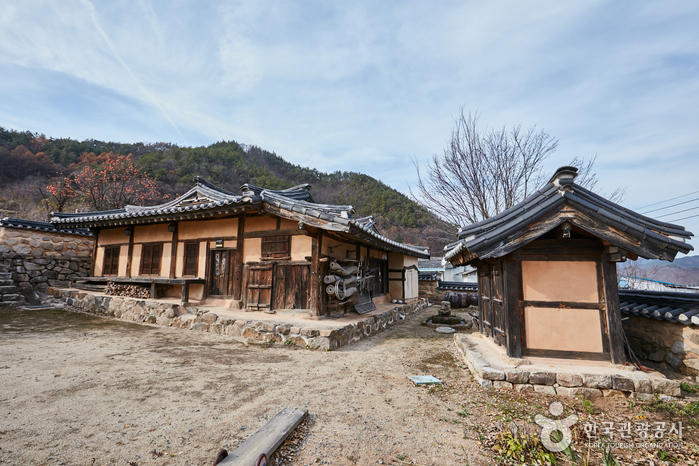
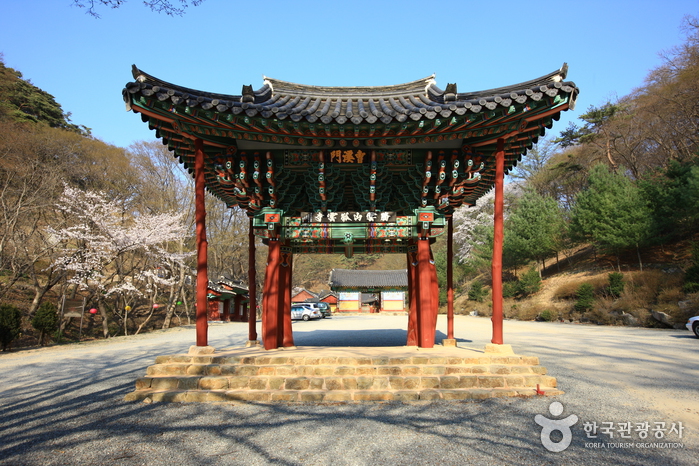
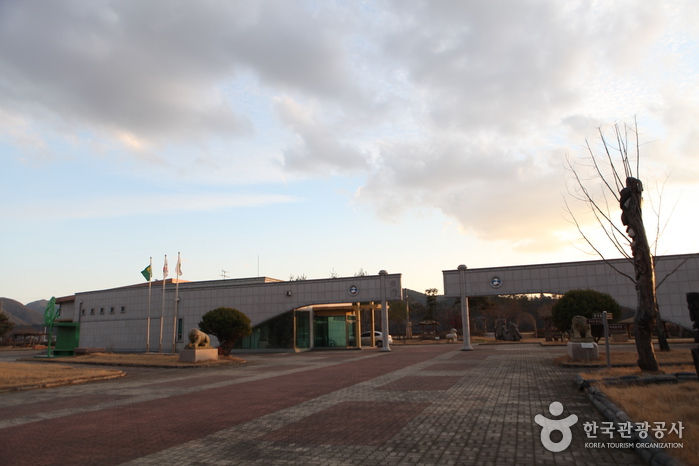
![Dalgi Mineral Spring [National Geopark] (달기약수탕 (청송 국가지질공원))](http://tong.visitkorea.or.kr/cms/resource/16/2703516_image2_1.jpg)
 English
English
 한국어
한국어 日本語
日本語 中文(简体)
中文(简体) Deutsch
Deutsch Français
Français Español
Español Русский
Русский